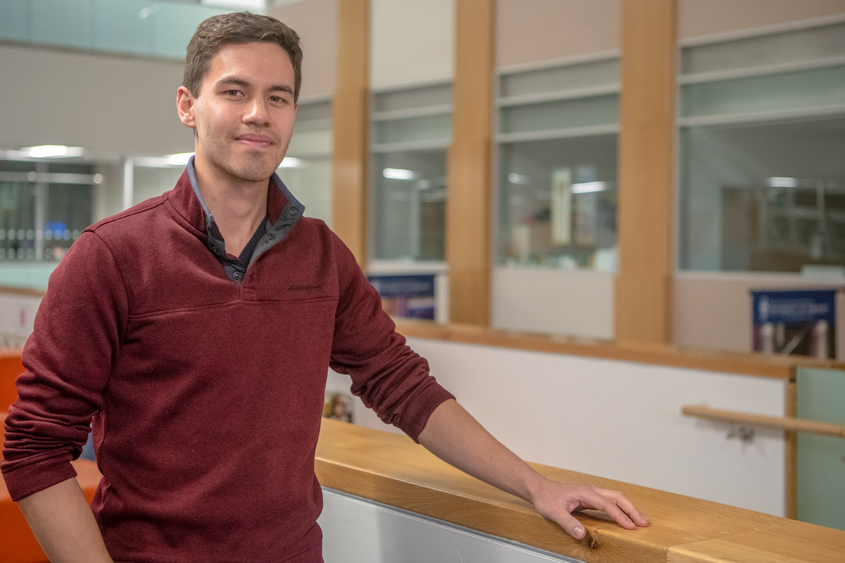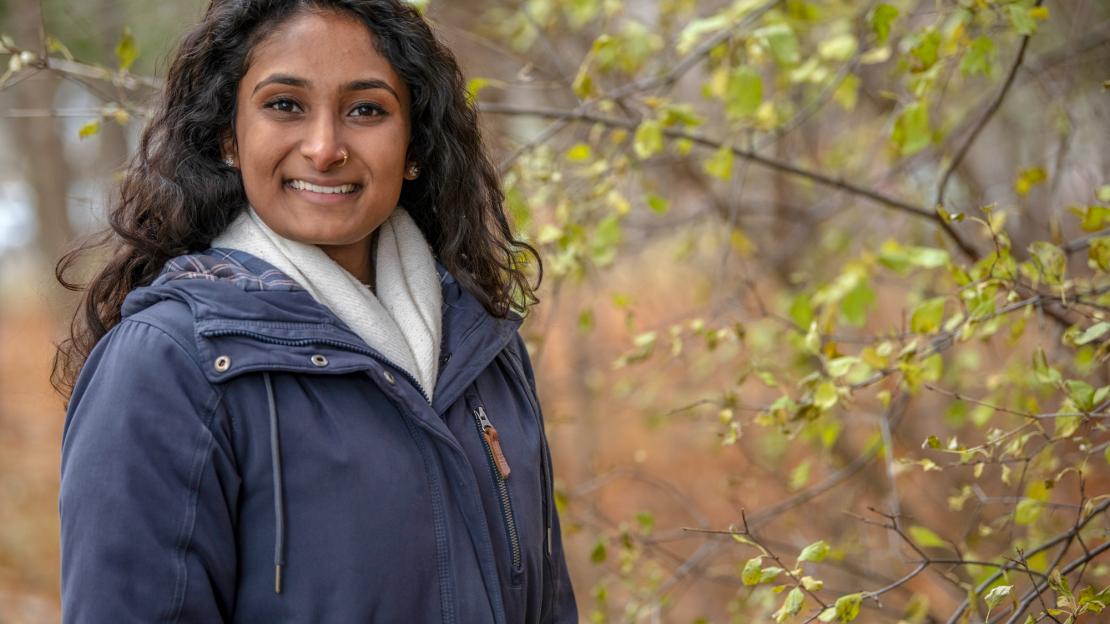In Neera Sundaralingam’s first formal job interview, she landed a permanent position in a job she loves as an environmental scientist with AECOM, a multinational engineering firm.
“Every day is always very exciting and interesting, because I really never repeat the same day,” says Sundaralingam, now part of the firm’s contaminant remediation team.
After submitting her resume, Sundaralingam finished a phone interview, a video interview, attended a mixer with other candidates and an in-person interview.
She says her interview skills were built in the master of environmental science program at U of T Scarborough. The program features three internship co-ordinators who work one-on-one with students to prepare them for job hunting. Sundaralingam says she frequented mock interviews for feedback until she was comfortable.
“A lot of people out there that are looking for jobs don’t have these kinds of resources available to them,” she says. “Having someone who is there just for you to help make sure your resume is perfect for a specific job, or that your interview skills are up to standard or even better than most, that’s really hard to find outside of this program.”
She now works with a range of projects, from small, individual properties to large-scale projects, like the extension of a highway. Sundaralingam finds soil contaminated by substances like gasoline and metals, including toxic substances, like PCBs. She works to make sure the soil is disposed of in ways that will not harm the environment.
Of the three streams students can specialize in, Sundaralingam chose Biophysical Interactions in Terrestrial and Aquatic Systems, which focuses on training students for careers in environmental monitoring, assessment, remediation and restoration, and includes courses specific to consulting.
She says another major benefit was having instructors actively working as consultants. Before she even started her job, she already had experience investigating contaminants at a site having done it as part of a class assignment.
“It’s great if you’re just starting out and you’ve had no prior experience, because you actually are exposed to the language that you will be dealing with,” she says. “These consultants give you projects that they do in the field as projects to do in class.”
Gaining experience by helping contain radioactive waste
After receiving his undergraduate degree in biology, Steven Davis became a zookeeper in Victoria, B.C.
“I wanted to work in the sciences, but I just felt like there wasn’t a lot of opportunity for growth where I was working. I knew I needed to pursue more education,” Davis says.
“There are a lot of master programs where you’re doing a thesis and writing papers, but this was a unique program that offered an internship.”

Davis says his only experience with environmental science was in watching nature documentaries like Planet Earth. Despite never having taken an environmental science course, he entered the master program at U of T Scarborough.
He completed his internship as an environmental project intern with the Port Hope Area Initiative, helping clean and contain radioactive waste.
Between 1932 and 1955, Eldorado Mining and Refining Ltd. refined and processed uranium and radium in Port Hope. During the Second World War, the Canadian government purchased the mine and used it to provide the U.S. with uranium for the Manhattan Project, and the world’s first nuclear weapons.
Historic amounts of low-level radioactive waste and contaminated soil, including radium, uranium and arsenic, were left scattered across Port Hope, including across urban and residential areas.
The initiative finds and transports this radioactive waste to a long-term waste management facility to make the Port Hope area safer for residents.
After finishing his internship, Davis was given a full-time, permanent job with the initiative. He began with data entry and quality control work, but has since moved more to security. Recently, he worked to develop a scannable ID badge system, to easily check that everyone on the site has the proper clearance and training.
But he says his work changes every day.
“There’s kind of a freedom where you don’t have a set role, it’s a very team-based effort,” he says. “It’s not a rigid schedule where every day you clock in and you’re doing one or two things a day — you’re doing 10 different things a day.”
Davis adds that the practical, hands-on course content, the internship and the guidance of the program-specific internship co-ordinators were a major benefit to him in starting his career.
“I came into this program because I wanted a job and I have a job now,” he says. “It’s pretty cool to see what you learned and apply that directly to your career.”
